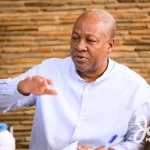By Salisu Be-Awuribe
Background
Ghana has moved from 3 Colonial Territories to 10 administrative Regions. The latest being the Upper West Region, carved out of the then Upper Regions. It was officially inaugurated in 1987 but which was created in 1982 before the 1984 Population Census.
Prior to the creation of the Upper West Region, several other demands from different Traditional areas notably Northern Region were made to the PNDC Government and its predecessors by various Regional Ministers/Secretaries/Commissioners, administrators and Traditional Councils, many of which went unheeded to.
In fact, the prime drivers for Regional creations have never been based on any verifiable object criteria but on the altar of political, historical, socio-cultural and Ethnotribal Considerations among others.
It was therefore not surprising that among the numerous demands on the PNDC Government, only the Upper West Region was successful despite the fact that on any objective criteria on an even Day, others would have succeeded prior to or alongside the Upper West Region.
JUSTIFICATION FOR CREATION OF ADDITIONAL REGIONS.
The official and Principal Reason usually canvassed for the Request or Justification for the creation of additional Regions is the DESIRE TO SPEED DEVELOPMENT AND TO BRING GOVERNANCE CLOSER TO THE PEOPLE.
But behind these fine lines of official diplomatic rhetorics lies the underlining misgivings, suspicions, mistrust, justifications, and triggers. Some of which include Ar Borne out of the following:
1)Uneven Developments within the Regions and across the country
2)Political and Cultural Hegemony
3)Development Policy Failures and the Poor Policy Prescriptions to Same.
4)Political gerrymandering
5)Practical Administrative Difficulties
6)Desire for Equitable Representation in National Affairs
7) Real or Perceived Dominance of one or more groups in Regional affairs to the Real or perceived neglect of the other(s)
Practical Geographical difficulties
9) Historical Suspicions among others.
In addition to the above, the constitution in several Articles require an even and balanced development across Regions, Recruitment to the Security services to be Regionally balanced, Appointments to the cabinet and many others to have an aromatic smell of a Regional Balance among others.
In every Region now, there would be a State Funded Regional Hospitals, Colleges of Education, Polytechnics or Technical Universities and other Liberal arts or Science Universities. There will also be Directorates of Education, Health, Highways, Feeder Roads, National Disaster Management Organisation, Town and Country Planning, Police and Other Security Services to maintain law and order etc.
These institutions mentioned above are not evenly geographically spread or located on defined scientific verifiable criteria but are sited on the bases of the fact that each Region must have at least one of those institutions as a minimum condition. Some of them are development poles to attract the needed public and private sector investments thereby improving the lives of the people in the said areas.
Others hold the view that, the real triggers of development are the MMDAs for they have a dedicated source of funding to carry out their infrastructural and other developmental needs and that people should clamor for more MMDAs than that of Regions.
While that view may hold some iota of truth, I respectfully it ignorantly understates the real drivers of Public resource allocation and investments in the country.
The institutions mentioned above are growth poles and drivers of development and when located anywhere in the country, they trigger accelerated development either directly or indirectly.
Moreso national resource allocations are made on the bases of defined administrative structures such as Sectors, Ministries and Departments, Regions and Districts. This explains the reasons why there is a ravenous appetite for Districts and Regions
POLITICAL AND CONSTITUTIONAL REQUIREMENTS
The 1992 Constitution has made the creation of Regions Inflexibly flexibly by virtues of the reasons stated below:
- It underscores the fact that such a function is a creature of politics and puts the decision to create or not to create on the laps of only one Man, THE PRESIDENT, acting suo moto or upon being satisfied that there is a substantial demand for such a creation per a petition presented to him on same. The petitioners are not defined or qualified. It means that any person or group of persons can present a petition for the creation, merger or alteration of any Region(s). {Article 5(1)(a)-(c), (2) & (3) of the Constitution}
- There is also an advisory and investigative requirement. Advisory as to the demand and the composition of the Commission of Inquiry to be made by the Council of State and investigatory per the settings up of a Commission of Inquiry and their Recommendation thereof to the President {Article 5(2),(3) &(4)}
- The Commission of Inquiry so set in furtherance of this objective is mandated to Recommend to the President as to
i) whether or not there are the NEED and a SUBSTANTIAL demand for the creation, alteration or merger in the first place
ii) if there is the NEED and SUBSTANTIAL DEMAND, then they are mandated to recommend to the President the holding of a REFERENDUM. What should be the criteria to be employed to determine whether or not there is truly a NEED and SUBSTANTIAL DEMAND? Are the Criteria, verifiable? What are the parameters of need and substantial demand? You Guess is as good as mine. The real issue determinant is, therefore, POLITICAL WILL and nothing Pretentious.
iii) As part of their recommendation for the holding of the Referendum, the Commission must specify the issues to be decided. That is whether to merge, alter or to create and from where or which part of the Region(s) is/are to be affected by this merger, alteration or creation and most importantly the Area or areas eligible to participate in the said REFERENDUM.
This is particularly important because we have never had a referendum to determine the creation of any region in Ghana. So there is no precedence to follow. The only precedence which comes close is the Pre-independence plebiscite which was conducted in the then UN Mandated Territory of Trans-Volta-Togoland( Now Volta Region and Eastern Corridor Part of Northern and Upper East Regions of Ghana) when they decided to join the yet to be declared Independent Ghana as one Nation. In the said Plebiscite, only the inhabitants in the area concerned voted to join independent Ghana.
By that precedence and many others across the globe, I humbly submit that, in cases of creation or alteration of boundaries of a region, the Referendum should be conducted only in the area to be altered or new Region to be created.
I must submit that this is a grey area which could be gerrymandered or exploited. The Constitution is absolutely silent on this part given the Commission an unfettered discretion, which discretion could be exploited either for good or for bad.
A Reliance on Article 296 of the Constitution as a guide to the exercise of discretionary powers of the Commission, i must submit respectfully, is inadequate and can be abused.
The Constitution doesn’t also require that the said Commission of Inquiry should use the same Criteria in determining the areas eligible for the referendum. It means that different criteria may be suggested to be used for different Request at the same time or at different times. A flexible or difficult criterion chosen by any Commission to meet the demands of any area goes unquestioned and unchallenged. After all, their recommendations are not to the consumption of the public but to the President, who is not bound to make the said findings and recommendations of the Commission Public. A deliberate or inadvertent injustice could, therefore, be meted out to others while an unfair advantage given to others.
A Constitutional Instrument or Judicial Pronouncement is therefore needed to illuminate this lacuna.
- iv) The Constitution stipulates a Validity and Acceptance Criteria for the questions stated in the Referendum to be carried.
In the case of the creation of alteration of Regions, there is a Simultaneous Validity requirement of not less than a clear Majority of Total Eligible Voters Turning out to vote. (50% or more). This therefore means that absent voters who were not with the jurisdiction of the Referendum, Dead Voters whose names are still in the Voters Register of the area, ‘Ghost’ voters and ‘ Foreigners who had their names found in the Register but were not present to vote would be deemed to have voted against the Creation of the Region by their absence. Voter apathy will, therefore, deal a mortal blow to any quest to create a Region.
Of the Majority of the Total Registered Eligible Voters turning out to vote, the constitution places a Super Majority requirement of not less than 80% endorsement of the issue tabled in the Referendum for it to be carried {Article 5(6) of the Constitution}.
It is however different from a merger of Regions. In Mergers, only the Referendum validity requirement of at least 60% Of all registered voters in the area earmarked for the referendum is required. The issue is said to be carried when there is a simple majority having satisfied the prima facie turnout requirement (Article 5(7) of the Constitution}
Therefore legally, a Referendum for a merger, alteration or creation is Null and void if the validity required is not met at the close of poll. No issue would be said to have been determined despite the fact that those who turned up to vote might have met the super Majority of 80% for Regional Creations or alteration or that the Simple majority requirement is satisfied in the case of Regional Mergers.
This is an area to watch by all those clamoring for the Creations of Regions.
CRITERIA FOR DIVISION OF EXISTING REGIONS.
Critical analyses of the 10 Regional boundaries in Ghana reveal one a disturbing factor. The isn’t any single objective verifiable criteria for their delimitation or demarcation. Their creations are deeply rooted in History, Traditional, Ethnic and Cultural allegiance, Physiographic and Political Considerations among others. In sum, it’s a cocktail of a complex matrix of geopolitical, Socio-Cultural factors.
Otherwise, the most convenient demarcations would have been to divide the country along Longitude 1 Degree West and their Latitudinal bisectors of 6, 8 and 10 degrees North. This would have given the country only 8 Regions.
But this unfortunately isn’t the case and it shall never be. It therefore means that, the advocates for vertical or Horizontal divisions of their Regions would not get it easy if that is the only convenient simplistic criteria to be used.
It also means that any division of any region must take into consideration, the complex matrix of other factors notably Traditional and customary allegiance and other inhibitory factors.
A disturbance of the customary and traditional political organisation of the areas may lead to resistance and generate unnecessary insecurity.
However, if the vertical or horizontal divisions are coterminous to the existing patterns or structures to which the people are comfortable, then it must be adhered to.
Partisan Political gerrymandering as witnessed in the creation of districts by all administrations may not produce an enduring result and should never be contemplated.
SHOULD TRADITIONAL COUNCILS BE WORRIED IF THEIR TRADITIONAL JURISDICTIONS ARE TO PARTITIONED IN FURTHERANCE OF REGIONAL CREATIONS?
It is the trite knowledge that administrative boundaries are not coterminous to Traditional Boundaries. This is partly true to the extent that it is within the same Region.
However, if a single monolithic centralized Traditional Council falls between two or more Regions, it changes their character and legal hold to each other as people with the same customs, traditions and Chieftaincy.
No wonder some Traditional Councils notably Dagbong and Gonjaland have vehemently vowed to resist any attempt to partition their Traditional Areas of authority between two Regions. They have however indicated that in principle, they are not averse to the division of the Northern Region.
Their fears are grounded in History, Practical experience and in Law. I will illustrate it using the examples of Northern Region.
Historically, under the Colonial Rule, Eastern Dagbong and Eastern Gonja were severed from their kinsmen of the West by the Germans and English. While the Germans Controlled the Eastern Part of these traditional areas, the British Controlled the Western Part. Meanwhile, these Traditional Areas of Dagbong and Gonja have a central Traditional authority namely Yani, and Yagbong respectively with Titles and Skins from either side which can ascend to those thrones. But these divisions made it practically impossible for the Kings to exercise practical Customary and Traditional Control on either side of the Colonial divisions. It led to a breakdown of the Chieftaincy institutions in those areas with some Divisional Chiefs assuming responsibilities and authority they don’t Customary possess under normal circumstance. Yoo Nam ( Savelugu Chief) and Kpembi are classical examples.
Another example is the practical loss of Traditional Control and Power of nomination, appointment, endorsement or Enskinment of Chiefs in the greater part of now Upper East Region of Ghana by the Nayiri, King of Mamprugu Traditional Area. Hitherto, he uses to Enskin Chiefs in Bolga, Bongo up to Bawku and beyond.
A considerable part of Gonjaland has falling in present day Brong Ahafo and Upper West Regions of Ghana. Some parts of Gonjaland are even in the Present Day Cote D’ Iviore.
The same can be said of Asanteman Traditional Council which have Areas within their jurisdiction outside the Asante Region but which owe allegiance to the Asantehene. But they are practically currently outside the control direct control. The Asanteman Traditional Council cannot deal with matters concerning Chieftaincy outside the Jurisdiction of the Asante Region. Any such exercise of Traditional authority is void for lack of jurisdiction.
Legally, the Institution of Chieftaincy and its Traditional Councils are guaranteed under the Constitution (Article 270)
The Chieftaincy institution is mandated to deal exclusively with ALL MATTERS AFFECTING CHIEFTAINCY to the exclusion of all other courts except the Supreme Court which has appellate Jurisdiction over cases dealt with at the National House of Chiefs. This notwithstanding, the High Court has supervisory Jurisdiction over Chieftaincy Tribunals, being inferior adjudicating bodies.
Section 76 of the Chieftaincy Act, 2008, Act 759 defines a Cause or matter affecting Chieftaincy to include a cause, matter, question or disputes relating to the nomination, election, selection or installation of a person as a chief or claim thereof, the deposition or abdication of a chief, the right of a person to take part in the nomination, selection, election, installation or deposition of a chief, the recovery or delivery of stool or skin property and the CONSTITUTIONAL RELATIONSHIPS UNDER CUSTOMARY LAW BETWEEN CHIEFS.
Again, Every Region must have Regional House of Chiefs (Article 274 of the Constitution)
Each Traditional Area is mandated to have Traditional and Divisional Councils (Section 12 of The Chieftaincy Act, 2008, Act 759).
The Traditional Councils operate under the ambit of the Regional Houses of Chiefs in Each Region.
It means that by necessary implication, there shall not be a single traditional council which transcends two Regions.
However, the Traditional Councils are mandated to resolve issues or causes of matter affecting Chieftaincy in their respective traditional areas through their Judicial Committees with a right of appeal to the Regional House of Chiefs and a further right of appeal to the National House of Chiefs{Article 273(2)&(5) of the Constitution and Sections 22-29 of Act 759}
The Constitution and the Chieftaincy Act reserve certain matters exclusively to the Judicial Committee of the National House of Chiefs.
It states that the National House of Chiefs shall have exclusive original Jurisdiction in matters affecting Chieftaincy which lies within the competence of two or more Regional Houses of Chiefs or which cannot be dealt with by a Regional House of Chiefs or which is not properly within the Jurisdiction of a Regional House of Chiefs Article 273(5)(a),(b) &(c) and Sections 22(a),(b)&(c) of Act 759}.
This therefore gives a compelling reason why a centralized Traditional Authority would resist any attempt to partition their Traditional Areas within two different Regions.
Let me illustrate this using a scenario in Northern Region.
TWO SCENARIOS IN NORTHERN REGION
A) GONJALAND
From the Above, if the Proposed Eastern Corridor Region is anything to go bye, then, there is a greater likelihood of East Gonja and/Or Kpandai District(s) of Gonjaland may be added to it. They may accept to be part or not. If they reject such a move through their vote in the referendum to be organized, their overwhelming rejection of their inclusion within the proposed Eastern Corridor Region, if the Commission decides to include them in the said areas eligible to vote in the referendum, may Pail into insignificance. This is what I may call the bullying of the Minority.
It will, therefore, mean that they will be compelled albeit reluctantly to belong to the Said Region.
However, they will loss their Traditional and customary ties with the Rest of Gonjaland.
They can’t belong to the GONJA Traditional Council legally. Their Chieftaincy disputes when resolved by Yagbongwura and the GONJA Traditional Council will be void and of no effect whatsoever for lack of Jurisdiction.
It will also mean that the only appropriate fora for the resolution of Chieftaincy Disputes or matters concerning Chieftaincy in the said areas will be the Judicial Committee of the National House of Chiefs sitting in Kumasi. Meanwhile, the Kpembiwura is among the 5 paramount skins which ascend to the Yagbong.
The other Chiefs in the Districts mentioned also play very important roles at both Kpembi and in the Royal Court of the Yagbongwura and the Gonja Traditional Council as a whole. It obviously will amount to an unacceptable aberration of the Institution of Chieftaincy which the Constitution seeks to protect and guarantee in Article 270.
No wonder the GONJA Traditional Council and the Gonjaland Youth Association through their PRO had vehemently indicated their abhorrence to any such moves.
The Gonjaland Traditional Council has subsequently renewed their demand for the creation of an additional Region out the current Northern Region to be known as the GUAN REGION.
I must say that they have been a bit moderate because they didn’t make a demand for the Alteration of their Territories in the Brong Ahafo and other Regions to be merged in their proposed GUAN REGION. Probably they didn’t want to Disturb the Status quo.
THE DAGBONG TRADITIONAL COUNCIL.
It’s one of the most powerful traditional councils in the North with a great blend of Human Resource and a very Rich History.
The Dagbong Traditional Council was loudly unanimous in recent Joint Press Release of the Dagbong and Nanung Traditional Councils that they unequivocally reject any Attempt to partition their traditional areas into separate Regions. Their Stand is unique in many ways.
Yendi is the Seat of the Traditional Council and it is the Town which is rumoured to benefit as the Regional Capital of the proposed Eastern Corridor Region. This would have made the same Traditional Area to benefit from an opportunity of having two Regional Capitals in Two separate Regions.
However, in the wisdom of the Traditional Council, having weighed the benefits of the such a creation and the effects it would have on the Dagbong in the short to medium term, they have turned down that offer. I guess they weighed the above discussed effect to their Existence and rightly took that decision.
The background to it is that, the sitting President, HE Nana ADDO, during his introductory justification of the reasons for the creation of certain Novel Ministries and appointment of Ministers to same, did indicate to the press that he wanted to create a Ministry of Regional Reorganization with Hon Dan Kweku Botwe as his minister to drive that agenda. He indicated his Governments desire to create an Eastern Corridors Region in the Northern Region among others.
Subsequent to that, there were calls from Konkomba Youth groups and a subsequent visit of the Chiefs and opinion leaders of the Konkomba and other Ethnic groups within the Eastern Corridor part of Northern Region, led by the Ubor of Saboba to the Flag Staff House to meet the President during which they further impress upon him to honour his pledge and their demand to create an Eastern Corridor Region with its capital at Yendi.
Coincidentally, a greater part of the Eastern Corridor is in the Dagbong and Nanung Traditional Councils which until now has not officially petitioned for the creation of any such Region within their area.
There were also loud whispers in the social and main stream electronic media by various enthusiastic Youth questioning when Dagbong will take its turn to present a formal petition for the creation of an additional Region(s) with Yendi as its capital, seeing that its Sister Kingdoms of Gonjalands and Mamprusi has all presented separate petitions each requesting for their areas to be carved out to form new Regions.
It therefore came as a shock and a blow to the advocates of the eastern corridor Region when the Dagbong and Nanung Traditional Councils released a joint press statement declining any move to partition their Traditional Areas but without rejecting any genuine desire of other Traditional Councils and Government to create additional Region(s) out of the Existing Northern Region.
I respectfully submit that until there is substantial Amendment of Chapter 22 of the 1992 Constitution on Chieftaincy, part of which is entrenched and a further amendment of some provisions of the Chieftaincy Act to allow Traditional and Regional Houses of Chiefs to exercise Jurisdiction on Chieftaincy Matters outside the Regions where their Traditional Heads resides, any partition of any Region which severe any Monolithic Traditional Council, the said Traditional Council and People would stand to lose tremendously and must be RESISTED with all the force it deserves. It has the tendency of dealing a mortal blow and irreparable damage to the Customs, traditions, Stability and unity of the Said Traditional Kingdoms. Such mustn’t be allowed to happen to any Traditional Area in Ghana.
Come to think of this. The Ya-Naa is the King of Dagbong, a fountain of Honour of the Rich history of Dagbong from whom all issues concerning the Culture and Tradition including matters concerning Chieftaincy are deemed to finally resolved customarily.
He has an unquestionable Power of direct and indirect appoint Royals to occupy many Skins or Chiefship in the Dagbong State. So to think that through a creation of Eastern Corridor Region, he would have lost all the legitimate right, not customarily, but legally, to deal with matters concerning Chieftaincy in the Metropolis and Districts of Tamale, Sagnerigu, Tolon, Kumbungu, Savelugu, Karaga, GUSHEGU, Nantong all in the Western Corridor of Dagbong on the altar of Creation of an additional Region is something that cannot be imagined. But if such happens, that will be the right statement of the law.
If the Eastern Corridor Region is created with the Western Dagbong Districts still in another Region, it will mean that any dispute or matter affecting Chieftaincy in the above named Districts can’t be resolved by the Ya-Naa.
They must Of necessity and by law either refer the Said Disputes, not to the Ya-Naa because he would have been in another Region but to either the Judicial Committee of the ‘Western Dagbong Traditional Council’ which will be independent of the One to which the Ya-Naa will be sitting and Presiding or to the Regional House of Chiefs to which Western Dagbong Belongs without recourse to Ya-Naa or better Still to the Judicial Gommittee of the National House of Chiefs as being a matter beyond the competence of the Regional House of Chiefs to which Western Dagbong might belong.
I am sure these and many others might have influenced the wise Chies Dagbong and Nanung to unequivocally reject any partition of their Traditional Areas between two Regions.
I am pretty sure that these and many others might have been the reason why two of the most populous and vast Regions of Ghana, Eastern and Ashanti, though ‘over qualified’ on any objective National Criteria is never contemplated of to be divided.
Though painful, I have no option to fully endorse the decision of the Dagbong and Nanung Traditional Councils on their Stands.
Barring any unforeseen circumstance, it looks like the Petitions of the Nayiri and the Yagbongwura are those effectively in the hands of the Commission for consideration in the Northern Region.
PARTISAN POLITICS IN THE PROPOSED CREATIONS.
Refreshingly, in the run up to the 2016 Elections, the two main leading political parties all resolved to create additional Regions in Ghana not by campaign rhetorics but it found expressions in their manifestos.
While the NDC stated emphatically that they will trigger the process leading to the possibility of creating about 5 additional Regions, they fell short of mentioning the specific details of all the areas to be affected for legal and strategic reasons.
The NPP on the other hand also promised to create a North Western Region out of the existing Western Region within 6 Months of assuming office.
Though the timeline provided by NPP has been missed, the President has demonstrated enough will and has triggered the processes which may ultimately lead to the creation of not just one but at least 4 or 5.
I, therefore, support the idea of the creation of additional Regions.
I must quickly add that any such creation must take into consideration all the myriad of factors and security concerns for such a creation to ensure the sustainability of our Societies and Nation as a whole.
Future processes must be guided by a Constitutional Instrument prescribing the manner in which such discretionary powers of the Commission must be exercised and stating a defined criteria for the Qualification or otherwise of an area to qualify for either a merger, Alteration or creation of additional Regions from existing once which must form the bases of any such petition.
May the coming years be better than this year.












